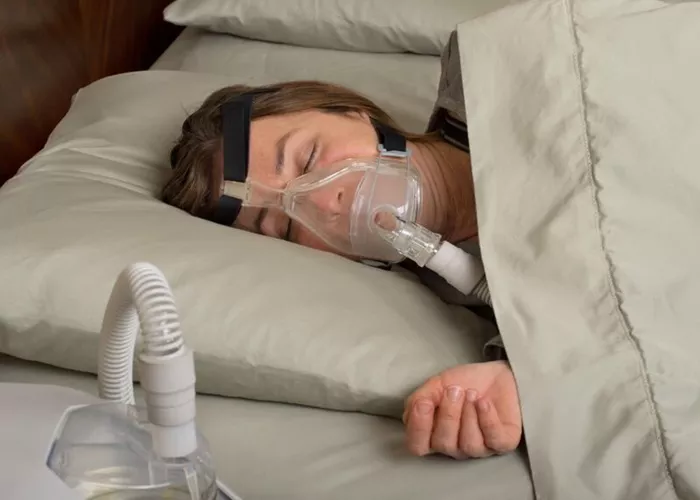People diagnosed with obstructive sleep apnea (OSA) face an elevated risk of developing Parkinson’s disease, but a preliminary study suggests that using continuous positive airway pressure (CPAP) therapy early may lower that risk. The findings were presented at the American Academy of Neurology’s 77th Annual Meeting, which is being held April 5-9, 2025, in San Diego and online.
Obstructive sleep apnea occurs when the muscles in the throat relax during sleep, obstructing the airway and causing frequent awakenings as the body struggles to breathe. This disruption leads to decreased oxygen levels, potentially affecting brain function. CPAP therapy, which involves delivering pressurized air through a mask to maintain an open airway, is commonly prescribed to manage OSA.
Study author Dr. Gregory D. Scott, MD, Ph.D., from the VA Portland Health Care System, explained that while untreated OSA has been linked to higher risks of heart attack and stroke, the good news is that CPAP therapy can mitigate these risks when started promptly.
The research involved a review of over 20 years of medical records, analyzing data from nearly 1.6 million veterans diagnosed with OSA and about 10 million veterans without the condition. The team assessed the development of Parkinson’s disease within these groups. Among those with sleep apnea, 3.4% (5,284 individuals) developed Parkinson’s within five years, compared to 3.8% (37,873 individuals) in the group without OSA.
However, Dr. Scott acknowledged that these initial figures might be skewed by factors like age, smoking habits, and overall survival rates between the two groups.
To adjust for these variables, the researchers examined Parkinson’s disease rates five years after an OSA diagnosis. After accounting for factors such as age, sex, and smoking, they found that individuals with OSA had 1.8 additional Parkinson’s cases per 1,000 people compared to those without the condition.
Among participants with OSA, 10% had documented use of a CPAP machine. These individuals were divided into two groups: those who began CPAP therapy within two years of diagnosis and those who started treatment after two years. The study revealed that those who delayed CPAP use had Parkinson’s disease rates similar to those who did not use CPAP at all—9.5 and 9.0 cases per 1,000 people, respectively. In contrast, participants who started CPAP within two years had a notably lower Parkinson’s incidence, with 2.3 fewer cases per 1,000 people than those who delayed treatment.
“This study provides encouraging evidence that early treatment of obstructive sleep apnea with CPAP may help reduce the risk of Parkinson’s disease,” said Dr. Scott. “Further research is needed to monitor individuals over a longer period after an OSA diagnosis to confirm these findings.”
A limitation of the study was the inability to track whether participants used their CPAP machines consistently and as prescribed, which could impact the results.
Related topic:
New Insights into Rare Disease Offer Hope for TDD Treatment
Trained Immunity May Drive Bone Loss in Inflammatory Diseases
Exercise May Reduce Risk of Dementia and Stroke

